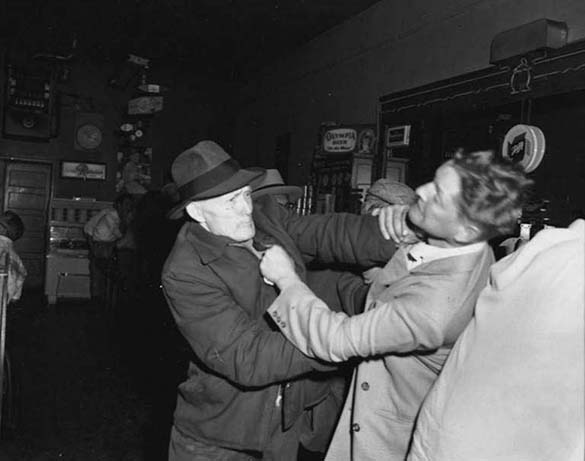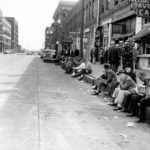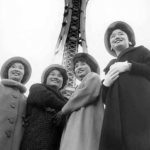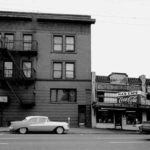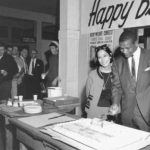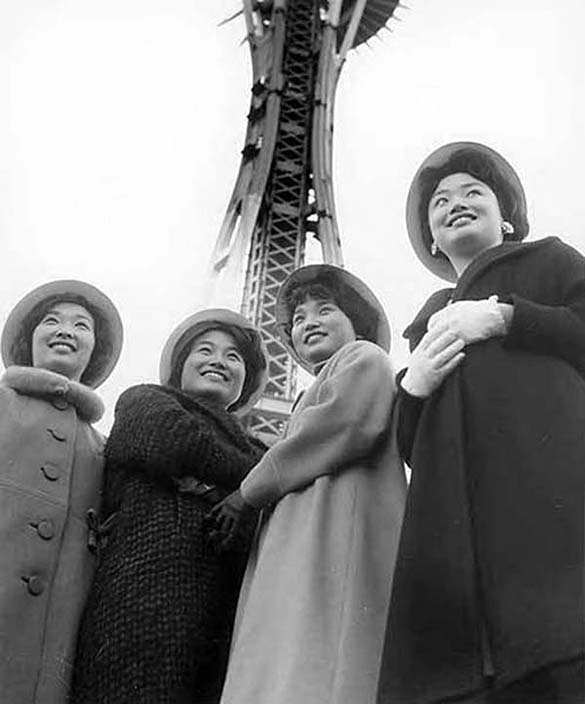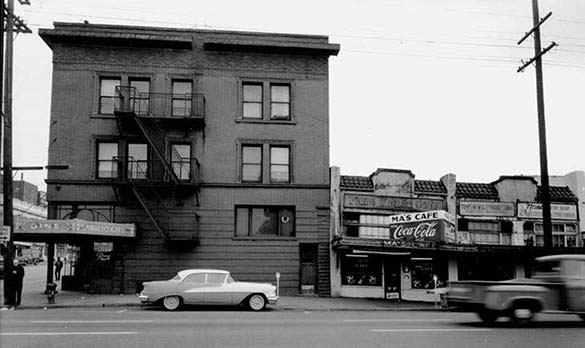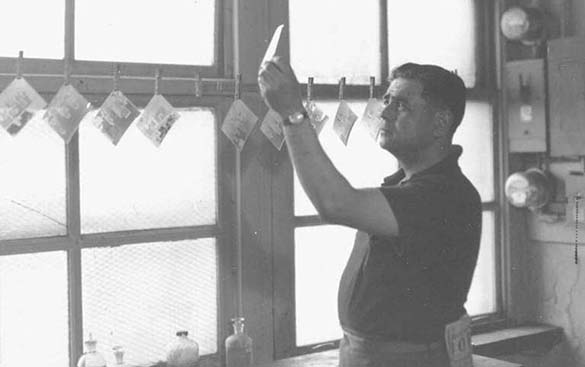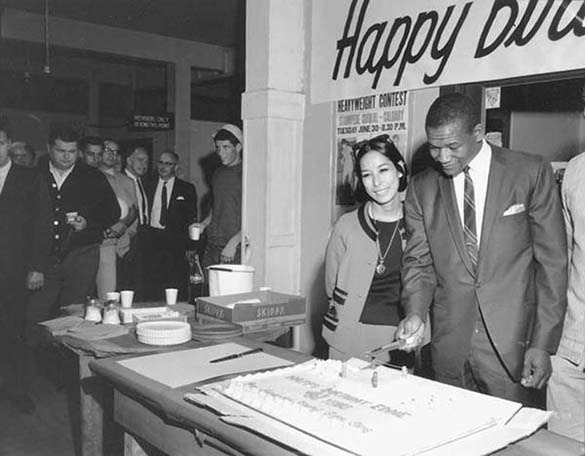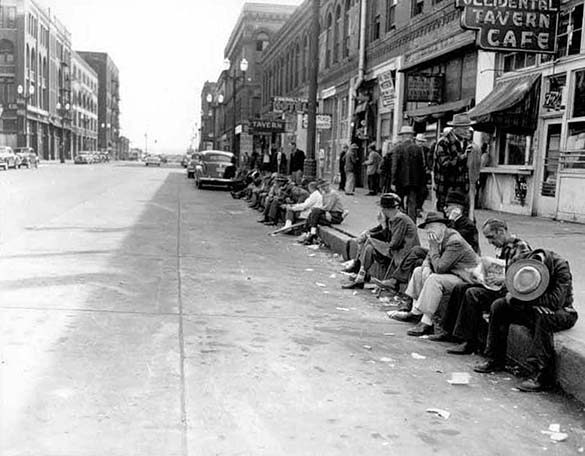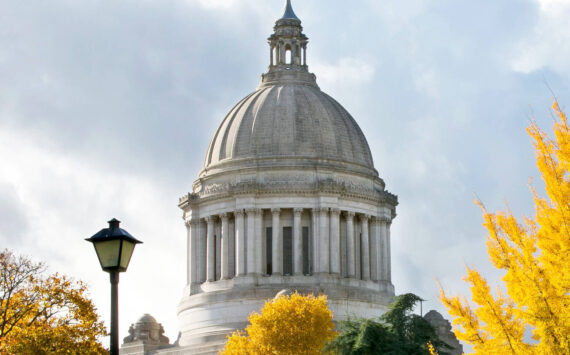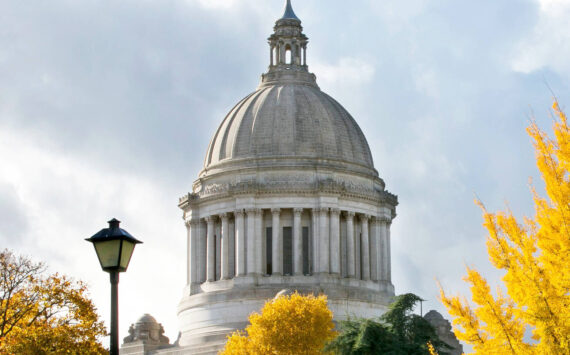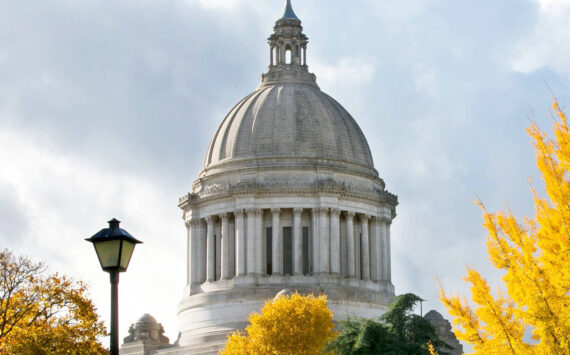EDITOR’S NOTE: This article is excerpted from Elmer Ogawa: After hours with Seattle’s forgotten photographer, a biography written by Tacoma Daily Index editor Todd Matthews. This is the first installment of three parts that will continue on Weds., Dec. 9, and conclude on Fri., Dec. 11. More information is available online at wahmee.com.
ONE SUMMER DAY in 1970, a sixty-year-old man named Herbert K. Ogawa arrived on the campus of the University of Washington, in Seattle, with a heart as heavy as his sense of duty. Ogawa would have preferred to be back home in a quiet suburb of Dallas with his family. Instead, he was in Seattle to bury his brother, Elmer, who had died of a heart attack that summer at the age of sixty-five, and settle his estate.
As he made his way across the campus, it was impossible for Herbert not to think about his brother. It was here that Elmer graduated in 1928, earning a bachelor’s degree in foreign trade. Herbert retraced his brother’s footsteps. He walked across the oceanic spread of red bricks that comprised the central plaza known to students and faculty as “Red Square.” He slipped between rows of scented cherry trees and past the column of water that shot nearly ten stories skyward from the pond surrounding Drumheller Fountain, gorgeously framing Mount Rainier in the distance, refreshing those who passed by with a cool mist. And he passed beneath the Gothic facades of lecture halls that filled the leafy campus on his way to the university’s imposing Suzzallo Library—a 1920s’ building whose elegance is still contained in its marble staircases, reading rooms crowned by vaulted ceilings that arch like a ship’s hull, and row after row of oak bookcases.
Once inside, Herbert headed toward the library’s special collections division to make arrangements to hand over a cache of documents he discovered in his brother’s small apartment in an old two-story, redbrick building just up the hill from Seattle’s Chinatown. For Herbert, it would bring him closer to settling his late brother’s affairs and boarding a return flight home. For two university librarians—Richard C. Berner, the library’s curator of manuscripts, and Robert Monroe, head of the library’s special collections division—it was an opportunity to build the special collections, which focused on Pacific Northwest history and had only been created seven years earlier, in 1963.
It’s likely the name “Elmer Ogawa” wasn’t immediately familiar to Berner or Monroe—or to any other local librarian, archivist, or historian. Ogawa was neither a famous man nor a scholar. He spent most of his life working itinerant and exhausting hard-labor jobs—first, in Alaska canneries as a teenager off-loading boats, gutting fish, and nailing together splintered boards to make shipping crates; then, on the East Coast as a traveling salesman and milk delivery driver, before serving as an army sergeant during World War II; and finally, in Seattle as a pipe fitter and boilermaker right up until his death.
If anything about Ogawa were to possibly pique the interests of local historians, it was this: wherever he went, Elmer Ogawa almost always carried a camera. When Ogawa wasn’t working in Seattle’s noisy and dirty industrial yards from the late 1940s to the early 1960s, he was a freelance photographer and writer for a variety of ethnic magazines and newspapers that reached readers in Seattle and beyond.


As a photographer for the Seattle-based newspaper the Northwest Times, Ogawa reported on everyday life in the ethnically diverse neighborhoods along a stretch of Jackson Street that ran from downtown Seattle past the Japanese- and Chinese-owned shops and restaurants, and into what was known to African American locals as the Central District. It was an easy enough beat, considering Ogawa lived for a spell in the six-story Bush Hotel, a bulky building that towered over the corner of Maynard Avenue and Jackson Street, the heart of Seattle’s Asian American community. Ogawa was Seattle’s own version of Weegee—the photographer who captured the gritty, workaday life of New York City—though he was never nearly as famous. He seemed to appear on the scene (camera in hand) of nearly every automobile accident in the neighborhood—a gory-for-its-day photograph of a man bleeding from his head and lying prone in the street after being struck by a hit-and-run driver; the twisted remains of a light pole after it was mowed down by a bus that skidded along icy Jackson Street during a winter snowstorm; and a variety of fender benders that blocked busy intersections and drew the gawking attention of neighbors and passersby. His photos also accompanied stories about hardworking Asian American men and women who owned the neighborhood laundries, drugstores, restaurants, and taverns. Ogawa was the man on the street for his time, a neighborhood blogger before there were blogs.
Starting in 1949, Ogawa was a writer and photographer for the Pacific Citizen, the weekly national newspaper of the Japanese American Citizens League (JACL). As a stringer at SCENE: The Pictorial Magazine—the Chicago-based, very popular Japanese American publication in the United States during the 1950s, boasting a “guaranteed” circulation of over 16,000—Ogawa documented the social lives and activities of Seattle’s Nisei community.
Finally, when Ogawa wasn’t on the clock, he could usually be found in one of Seattle’s dive bars—Tim’s Tavern on East Pike Street, Barney’s Cafe on Seventh Avenue, Bamboo Inn Cafe on Maynard Avenue South, or maybe the Klondyke Cafe on South Washington Street—always with his camera nearby. Indeed, as his photographs candidly and charmingly depict, Ogawa loved to hang out in taverns, downing many frosty pints of beers and trading jokes with friends and bar regulars.
Ogawa, whose mother was German Irish and father was Japanese, was an easy figure to spot around town. At five feet, eight inches tall, and weighing nearly two hundred pounds, he had a husky physique, jet black hair combed back in a shiny slick, meaty jowls that hung beneath his eyes like saddlebags, cork plug nose, thin mustache, thickly forested eyebrows, and wide smile. Perched at a bar, Ogawa would have been impossible to ignore, and one can imagine a chorus of “Hey, Elmer!” when he stepped inside one of his favorite taverns. He was also a man with many nicknames: Yelmer, Pop, Bub, Beef, and The Count.
Shortly after Herbert Ogawa donated his brother’s papers and photographs to the University of Washington, library staff prepared a single-page, handwritten list—a back-of-the-napkin-type catalogue of sorts. Today, it provides some insight into what the library felt was most significant: fourteen thousand black-and-white negatives and seven thousand black-and-white prints depicting a range of well-known people (Washington State senators Henry M. “Scoop” Jackson and Warren G. Magnuson; Vice President Richard M. Nixon; Mayors Pomeroy and Devin; Broadway performer Pat Suzuki; and artists George Tsutakawa and Paul Horiuchi), events (Seafair parades, the 1962 World’s Fair, and annual memorials, such as Bon Odori and Memorial Day) and organizations important to Seattle’s Asian American communities (JACL, Jackson Street Community Council, American Legion Cathay Post, Veterans of Foreign Wars, and the Nisei Veterans Committee).
One could imagine the UW Library’s Berner and Monroe with each box they opened equally amazed by the photographs of Seattle history as amused by the photographs of drunk tavern dwellers. Staff eventually catalogued all the material, compiled an inventory list, and stored everything in archives. The papers and correspondence were contained in ten boxes filled with hundreds of file folders, and the photographs and negatives were stored in three dozen boxes and tucked away on shelves.
For the next four decades, everything—all the photographs, magazines, newspapers, and correspondence—would remain in these boxes, largely untouched and ignored.
I FIRST LEARNED of Ogawa in 1997 while conducting research for a book. I was looking for historic photographs of the Wah Mee Club, a bar and gambling hall that was part of the festive nightlife scene in Seattle’s Chinatown during the 1940s and 1950s. The name Elmer Ogawa surfaced during my research, and I visited the University of Washington Libraries Special Collections to leaf through his photographs. It wasn’t long before I landed on the photograph I wanted. It was a black-and-white picture circa 1950 depicting seven young Asian American men gathered at the club’s curvy bar. Everyone is smiling, a drink in front of each reveler. A pack of Lucky Strike cigarettes sits upright among an array of ashtrays. Ornamental lanterns glow overhead. One young man wears a fedora, while a few others sport leather bomber jackets. At the end of the bar, a waiter dressed in a white suit and black tie smiles alongside his customers.
My research was complete, but I continued poring through Ogawa’s photographs, one box after another, until several hours had passed and the library was closing. I was intrigued by Ogawa, but my first priority was the research for my book. If I wanted to learn more about Ogawa, it would have to wait.
Fifteen years later, my mind finally circled back to the name Elmer Ogawa and that first visit to UW’s Special Collections. In October of 2012, I made my way to the basement of the Suzzallo Library, where the University of Washington Libraries Special Collections is housed. Once inside, the setting is typical of a library research room—rows of wide desks for visitors to spread out old documents and pore over fine historic artifacts; a team of librarians perched on stools behind counters, waiting to search a computer database or disappear behind key-card-accessible doors to retrieve boxes; and a side room full of the university’s rarest documents, maps, and collectibles. Yet, this library is different, and a visit is not a casual affair. You are unlocking a vault to Pacific Northwest history. The list of contraband is specific and clear. Bags or containers of any kind are prohibited. Cameras and laptop computers are allowed, but not their cases. Pencils and single sheets of paper are permissible, but not notebooks or pens. You are encouraged to check in your coat or sweater at the front desk (if not, you have to wear them at all times during your visit).
When I arrived, a staff member at the front counter assigned a user number to me and I filled out a form in triplicate that included the collection name (“Elmer Ogawa Papers”), collection number (1383-001), and box numbers for staff to retrieve (#1 through #10: everything in the collection). I was buzzed past a waist-high swinging door and found an empty table at the far end of the library. A few moments later, a young woman arrived pushing a rolling cart stacked with narrow gray boxes. For the next six hours (and during subsequent visits over the next few months), I carefully uncapped the boxes, removed folders, and leafed through documents. There was original correspondence (once neatly typed out in blocky letters on clean white paper, but now aged to the color of coffee-stained teeth) to Ogawa from magazine editors discussing everything from future story assignments to payment schedules to feedback from readers. I found handwritten cards and letters from a range of local notables, like prominent immigration attorney Dan. P. Danilov, Seattle’s first Asian American city council member Wing Luke, the Seattle mayor Gordon S. Clinton, and United States senator Daniel K. Inouye. There was even a colorful, handmade card from a Japanese American figure skater and member of the Ice Capades whom Ogawa photographed in 1967.
Judging by what Ogawa saved, it’s tempting to assume he was a borderline hoarder. Some items he saved seemed mundane, banal, and insignificant, such as a back-and-forth correspondence between Ogawa and his landlord (Ogawa complained about roaches and trash bins that overflowed onto a nearby alley, while his manager eventually typed out an eviction notice); the blue copy of a triplicate estimate for repairs after he wrecked his automobile; a bright red cookbook published by famed Seattle restaurateur and politician Ruby Chow; and a receipt for twenty dollars, issued to Ogawa in 1957 at 7:45 a.m. when he bailed himself out of jail after he was arrested for being drunk in public.
He also saved things that, decades after his passing, help strangers and biographers piece together his life. There are pages upon pages of correspondence from magazine and newspaper editors discussing freelance assignments, such as the Nisei square dancing scene in Seattle; a matsutake mushroom hunt; a profile of Seattle artist George Tsutakawa; a portrait photograph of a veteran who survived the sinking of battleship Maine during the Spanish-American War and was now living on Yesler Way in Seattle; and Japanese American babies born on New Year’s Day.
There are also letters outlining payment terms—usually three dollars per photo, ten dollars for cover shots, as well as two to five cents per word if Ogawa wrote the articles. He also collected nearly every magazine and newspaper clipping with his byline. The magazines are well preserved, even down to the subscription mailers still neatly stapled inside. The newspaper clippings, though still readable, have the texture and color of dried leaves.
In addition to Ogawa’s work as a freelance photographer, the archived boxes and folders also hold more clues to Ogawa’s personal life: Christmas cards, family photographs, military records, and when Ogawa was hospitalized after a hernia operation, he saved the cards and letters that arrived, along with a cartoon from an illustrator friend, showing Ogawa in a hospital bed and asking a nurse for a cold beer.
Every box I opened, every file folder I spread open told Ogawa’s story with a clarity that could only come from the personal documents he collected and left behind. Ogawa was a gifted photographer, adored by the editors he worked for. But, as the documents he left behind show, his life was also marked by its share of shortcomings. His photojournalism wasn’t a part of Seattle’s historical narrative. Some four decades following his death, I wanted to learn more about this overlooked Seattle photographer.


Todd Matthews is editor of the Tacoma Daily Index, an award-winning journalist, and the author of several books. His journalism is collected online at wahmee.com.
